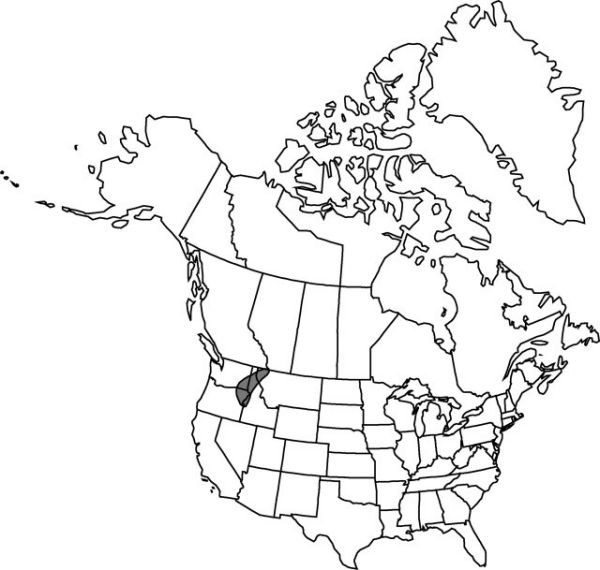Allium fibrillum
in L. Abrams and R. S. Ferris, Ill. Fl. Pacific States 1: 393. 1923.
Bulbs 1–5+, without cluster of basal bulbels, not clustered on stout primary rhizome, ± globose, 0.5–1.2 × 0.5–1 cm; outer coats enclosing 1 or more bulbs, brownish, membranous, reticulate; cells very fine, often obscure, narrow, ± transversely elongate, intricately contorted, without fibers; inner coats white to pink, cells obscure, transversely elongate, intricately contorted. Leaves usually persistent, withering from tip by anthesis, 2, basally sheathing, sheaths not extending much above soil surface; blade solid, flat, ± falcate, linear, channeled, 7–24 cm × 0.5–3 mm, margins entire. Scape persistent, solitary, erect, solid, terete or slightly flattened to very narrowly winged, 3–15 cm × 0.5–2 mm. Umbel persistent, erect, compact, 10–20-flowered, hemispheric to globose, bulbils unknown; spathe bracts persistent, 2, 4–6-veined, ovate, ± equal, apex acuminate. Flowers campanulate, 5–8 mm; tepals erect, white with prominent greenish or pink midribs, lanceolate, ± equal, becoming papery in fruit, margins entire, apex obtuse to acuminate, ± involute at tip; stamens included; anthers yellow; pollen yellow; ovary crestless or obscurely crested; processes 3, low, rounded, margins entire; style linear, equaling stamens; stigma capitate, unlobed; pedicel 3–10 mm. Seed coat dull or shining; cells smooth. 2n = 14.
Phenology: Flowering May–Jul.
Habitat: Moist, shallow soils
Elevation: 300–2600 m
Distribution

Idaho, Mont., Oreg., Wash.
Discussion
Allium fibrillum closely resembles A. madidum but does not have a cluster of basal bulbels.
Selected References
None.